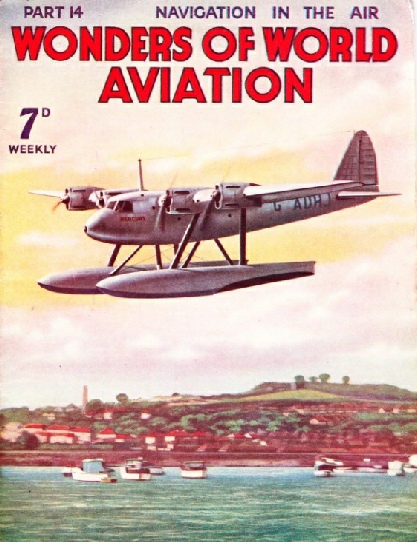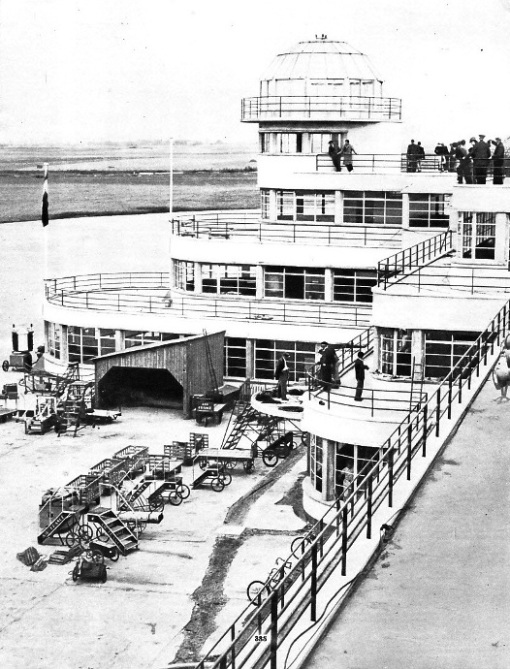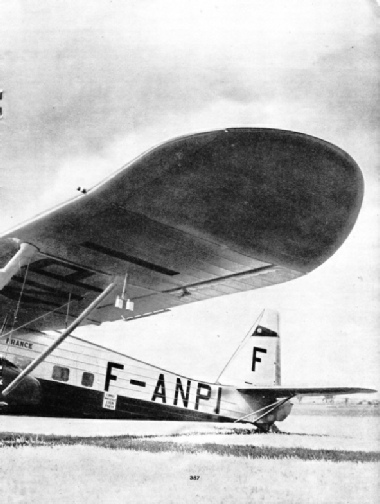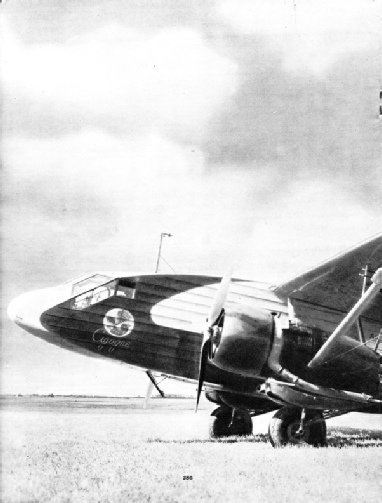
© Wonders of World Aviation 2015-


Part 14
Part 14 of Wonders of World Aviation was published on Tuesday 7th June 1938, price 7d.
This part included a central photogravure supplement showing French air services. This section illustrates the article on World-Wide French Services .
The Cover
Our cover picture this week shows Mercury, the top component of the Short-Mayo composite aircraft , in flight during its tests at Rochester, Kent. Normally this seaplane will be so heavily loaded that it will require the aid of Maia, the lower component, to assist it into the air.
You can read more on the Short Mayo composite aircraft in part 1.

Contents of Part 14
Tests of Flying Fitness (Part 2)
The high standards of physical fitness demanded in the specialized examinations of the Central Medical Board of the Air Ministry. This chapter is concluded from part 13.
The Principles of Navigation
For ordinary flights there are three essentials. Firstly, the map should incorporate the (north and south) lines of longitude as straight lines, and the (east and west) lines of latitude as straight or nearly straight lines. Secondly, the difference between true (or geographic) north and magnetic (or compass) north should be indicated. Thirdly, the scale to which the map is drawn should be marked. With this information the pilot can measure beforehand the course he has to fly and how long it will take him to cover the distance between two places on the map.
Everybody has now become familiar with the bird’s-
This chapter is the third article in the series on Air Photography.
France is still one of the leaders of world aviation. In 1933 the five principal air lines in France were merged in to one organization, Air France, which now operates about 23,000 miles of air routes. Air France’s development to its present efficiency has maintained the French tradition for pioneering. The five fleets which were taken over by Air France in 1933 had a total of 259 aircraft, of which 226 were land-planes, and thirty-three were seaplanes or flying boats. These machines were unsuitable for routes which were to extend to about two-thirds of the world’s circumference, and they had to be replaced by various types of aircraft which would suit the conditions of the new routes. How this task was accomplished, and how the routes were developed, form the subject of this chapter.
This is the sixth article in the series Air Routes of the World.
World-Wide French Services Photogravure Supplement - 2
HIGH-WING, TWIN-ENGINED BRACED MONOPLANE of the type used on the services between Paris, Lyons, Marseilles and the French Riviera. Until their replacement by Dewoitine 338s, they were used on the Far East service. This Potez 62 aircraft, which is named Cigogne (Stork), has two Gnome-Rhone 14Kirs fourteen-cylinder radial engines, which are air-cooled and supercharged. The Cigogne’s span is 73 ft 7½-in, her length is 56 ft 9½-in, and her height 12 ft 9-in. The wing area is 818 square feet. The weight loaded is 16,500 lb. Maximum speed at 6,560 feet is 202 and cruising speed at the same height 174 miles an hour. The normal range is 620 miles.
Romance of the Wright Brothers
How the successful Orville and Wilbur Wright aeroplane of 1903 was developed from glider designs. When we reflect on the part that France has played and still plays in world aviation it is a remarkable thing that France should have shared the world’s indifference to the momentous achievement of the Wright brothers, who made the first power-
Flying in New Zealand
The problems of establishing air services to New Zealand are considerable. The Dominion is not, at the time of writing (1938), linked by regular services with the air route between Great Britain and Australia. Because of the isolated situation of the Dominion and the geographical characteristics of the country, commercial aviation has developed slowly. The first regular air line was inaugurated in December 1934. Recently, progress has been accelerated and the four companies now operating aircraft services in New Zealand have co-
This is the seventh article in the series Air Routes of the World.
World-Wide French Services
Photogravure Supplement
CONTROL TOWER AT LE BOURGET AIRPORT, Paris. From Le Bourget Air France, either independently or in conjunction with other companies, operates services in many directions. North-west, north and east, the air lines reach London, Brussels, Rotterdam and Amsterdam, Cologne and Berlin. Strasbourg and Prague - for Warsaw or for Vienna, Budapest, Belgrade and Bucharest. Going south are the trunk line to Marseilles - for Cannes, North Africa and for the Levant and the Far East.



